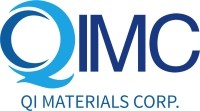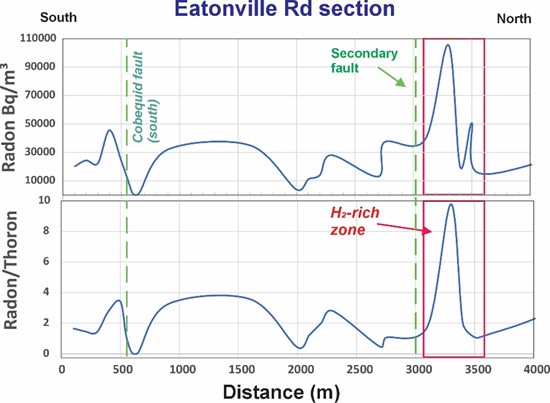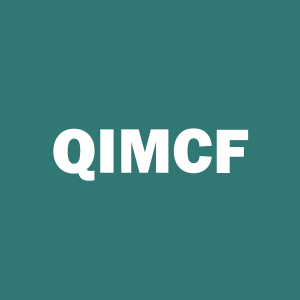Quebec Innovative Materials Announces Winter Drilling in Nova Scotia with New High Hydrogen Data Confirming a Deep Natural Hydrogen System
Québec Innovative Materials (OTCQB: QIMCF) announced a winter drilling program at West Advocate, Nova Scotia, following new hydrogen and radon-thoron data confirming a deep, structurally controlled natural hydrogen system.
Key measured results include surface hydrogen up to 4,300 ppm, soil-gas readings of 3,800–4,300 ppm, subsurface bedrock > 1,000 ppm, and radon peaks exceeding 100,000 Bq/m3. No detectable CO2, methane, or sulfur gases were recorded.
Planned geophysics (Nov 2025–Jan 2026) include a 1,000‑station gravimetric survey, ~17 km AMT, high‑resolution geoelectrical tomography (1,000 m sections), and dense TDEM; gravimetry began mid‑October and is expected to end mid‑November 2025. Integrated models will guide winter drilling targets.
Québec Innovative Materials (OTCQB: QIMCF) ha annunciato un programma di trivellazione invernale a West Advocate, Nuova Scozia, dopo nuovi dati su idrogeno e radon-thoron che confermano un sistema di idrogeno naturale profondo e controllato strutturalmente.
Tra i principali risultati misurati ci sono idrogeno superficiale fino a 4.300 ppm, letture di gas del suolo tra 3.800–4.300 ppm, roccia subsuperficiale > 1.000 ppm e picchi di radon superiori a 100.000 Bq/m3. Non sono stati rilevati CO2, metano o gas di zolfo.
Le geofisiche previste (novembre 2025–gennaio 2026) includono una survey gravimetrica (1.000 stazioni), circa 17 km AMT, tomografia geoelettrica ad alta risoluzione (sezioni da 1.000 m) e TDEM denso; la gravimetria è iniziata a metà ottobre e dovrebbe concludersi a metà novembre 2025. I modelli integrati guideranno gli obiettivi di trivellazione invernale.
Québec Innovative Materials (OTCQB: QIMCF) anunció un programa de perforación invernal en West Advocate, Nueva Escocia, tras nuevos datos sobre hidrógeno y radón-thorón que confirman un sistema natural de hidrógeno profundo y controlado estructuralmente.
Entre los resultados clave medidos se encuentran hidrógeno en superficie de hasta 4,300 ppm, lecturas de gas del suelo de 3,800–4,300 ppm, roca subterránea > 1,000 ppm y picos de radón superiores a 100,000 Bq/m3. No se detectaron CO2, metano ni gases de azufre.
Las geofísicas planificadas (nov 2025–ene 2026) incluyen un levantamiento gravimétrico de 1,000 estaciones, ~17 km AMT, tomografía geofísica de alta resolución (secciones de 1,000 m) y TDEM denso; la gravimetría comenzó a mediados de octubre y se espera que termine a mediados de noviembre de 2025. Los modelos integrados guiarán los objetivos de perforación invernal.
퀘벡 이노베이티브 머티어럴스(OTCQB: QIMCF)는 노바스코샤주 웨스트 애드보캐에서 겨울 시추 프로그램을 발표했습니다. 구조적으로 제어된 깊은 천연 수소 시스템을 확인하는 새로운 수소 및 라돈-토론 데이터에 따라.
주요 측정 결과로 표면 수소 최대 4,300 ppm, 토양가스 읽기 3,800–4,300 ppm, 지하 암석 > 1,000 ppm 및 라돈 피크가 100,000 Bq/m3를 초과했습니다. CO2, 메탄 또는 황 가스는 검출되지 않았습니다.
계획된 지구물리학 연구(Nov 2025–Jan 2026)에는 1,000개 관측소 중력측정 survey, 약 17 km AMT, 고해상도 지전도단층촬영(1,000 m 구간), 밀집 TDEM이 포함됩니다; 중력 측정은 2025년 10월 중순에 시작되어 11월 중순에 종료될 예정입니다. 통합 모델은 겨울 시추 목표를 안내할 것입니다.
Québec Innovative Materials (OTCQB: QIMCF) a annoncé un programme de forage hivernal à West Advocate, Nouvelle-Écosse, suite à de nouvelles données sur l'hydrogène et le radon-thoron confirmant un système d'hydrogène naturel profond et contrôlé structurellement.
Parmi les résultats mesurés clés figurent l'hydrogène en surface jusqu'à 4 300 ppm, des lectures de gaz du sol de 3 800–4 300 ppm, des roches sous-surface > 1 000 ppm, et des pics de radon dépassant 100 000 Bq/m3. Aucune détection de CO2, de méthane ou de gaz sulfurés.
Les géophysiques prévues (nov. 2025–janv. 2026) comprennent une enquête gravimétrique à 1 000 stations, environ 17 km AMT, une tomographie géoélectrique haute résolution (sections de 1 000 m) et un TDEM dense; la gravimétrie a commencé à la mi-octobre et devrait se terminer à la mi-novembre 2025. Les modèles intégrés guideront les objectifs de forage hivernal.
Québec Innovative Materials (OTCQB: QIMCF) kündigte ein Winterbohrprogramm in West Advocate, Nova Scotia, an, nachdem neue Wasserstoff- und Radon-Thoron-Daten ein tiefes, strukturell kontrolliertes natürliches Wasserstoffsystem bestätigen.
Zu den wichtigsten gemessenen Ergebnissen gehören Oberflächenwasserstoff bis 4.300 ppm, Boden-Gaswerte von 3.800–4.300 ppm, unterirdischer Fels > 1.000 ppm und Radonpeaks über 100.000 Bq/m3. Es wurden keine CO2, Methan oder Schwefelgase nachgewiesen.
Geophysikalische Planungen (Nov 2025–Jan 2026) umfassen eine 1.000-Stationen-Gravimetrie-Umfrage, ca. 17 km AMT, hochauflösende Geoelektro-Tomographie (1.000 m Abschnitte) und dichter TDEM; Gravimetrie begann Mitte Oktober und soll Mitte November 2025 abgeschlossen werden. Integrierte Modelle werden Winter-Bohrziele leiten.
Québec Innovative Materials (OTCQB: QIMCF) أعلنت عن برنامج حفر شتوي في West Advocate، نوفا سكوشيا، عقب بيانات جديدة عن الهيدروجين ورادون-ثورون تؤكد وجود نظام هيدروجين طبيعي عميق يتم التحكم فيه هيكلياً.
تشمل النتائج الرئيسية المقاسة الهيدروجين السطحي حتى 4,300 ppm، قراءات الغاز في التربة من 3,800–4,300 ppm، الصخور تحت السطح > 1,000 ppm، وذروات الرادون تتجاوز 100,000 Bq/m3. لم تُسجل أي ثنائي أكسيد الكربون CO2، أو ميثان، أو غازات الكبريت.
التخطيط للجيوفزيائيات (نوف 2025–كانون الأول 2026) يشمل مسحاً Gravimétrياً بواقع 1,000 محطة، نحو 17 كم AMT، تصوير جيومغناطيسي عالي الدقة (قطع بطول 1,000 م) وتدفق TDEM كثيف؛ بدأ القياس الجاذبي في منتصف أكتوبر ومن المتوقع الانتهاء في منتصف نوفمبر 2025. النماذج المدمجة ستوجه أهداف الحفر الشتوي.
- Surface hydrogen readings up to 4,300 ppm
- Soil‑gas hydrogen of 3,800–4,300 ppm in Nov 2025
- Subsurface bedrock hydrogen > 1,000 ppm at >3 m depth
- Radon concentrations exceeding 100,000 Bq/m3
- 1,000‑station gravimetric survey underway (mid‑Oct to mid‑Nov 2025)
- ~17 km AMT survey planned (Nov–Dec 2025) to map deep structures
- Radon and hydrogen anomalies absent along portions of Eatonville Road, limiting anomaly continuity
Montreal, Quebec--(Newsfile Corp. - November 12, 2025) - Québec Innovative Materials Corp. (CSE: QIMC) (OTCQB: QIMCF) (FSE: 7FJ) ("QIMC" or the "Company") is pleased to announce winter drilling program in West Advocate with new results from its ongoing hydrogen and radon-thoron exploration work in Nova Scotia's Cobequid Fault region. The latest data in West Advocate confirm the presence of a structurally controlled, deep-seated clean natural hydrogen system, directly guiding the Company's priority drill-targets for the upcoming winter drilling program. Vitaly Vidavskiy of Avalio, a world-renowned expert in natural hydrogen, will provide advisory services on the initial winter drilling program.
"Today's announcement of our initial winter drilling program at West Advocate marks another significant milestone for Québec Innovative Materials Corp. (QIMC) and our Nova Scotia Clean Natural Hydrogen Project," said John Karagiannidis, President & CEO of QIMC.
"Our priority drill targets for the upcoming winter season are centered on the West Advocate area, where hydrogen measurements have demonstrated remarkable consistency across three consecutive field seasons. Recent surface readings-reaching up to 4,300 ppm-combined with subsurface rock samples exceeding 1,000 ppm, confirm the presence of a robust and dynamic natural hydrogen system. The strong correlation observed between radon, thoron, and hydrogen across multiple datasets further supports the interpretation of an active, advective, and abiotic hydrogen flow.
"As we advance in our drilling program these results mark a decisive step toward confirming one of the most compelling natural hydrogen systems identified in North America."
Recent soil-gas sampling in the West Advocate area returned hydrogen concentrations of 3,800 ppm and 4,300 ppm, obtained during the first week of November. These new results demonstrate remarkable consistency across three distinct sampling seasons and temperature regimes, underscoring the dynamic, advective, and abiotic nature of the hydrogen system. Importantly, these high hydrogen measurements were recorded with no detectable CO₂, methane, or sulfur gases, confirming the clean, abiotic origin of the emissions. Additional measurements exceeding 1,000 ppm directly on exposed bedrock at a depth of over three meters, without overburden interference, further confirm the surface-to-subsurface correlation in hydrogen emissions. Collectively, these findings validate QIMC's exploration model for fault-controlled natural hydrogen migration systems in sedimentary and crystalline rock environments.
Clean Natural hydrogen system
"The radon survey section along Eatonville Road (Figure 1) demonstrates the effectiveness of radon measurements in locating zones of higher permeability associated with secondary faults in the West Advocate area," said Prof. Marc Richer-Laflèche of the Institut National de la Recherche Scientifique (INRS). "These areas are characterized by very high radon concentrations and elevated radon/thoron ratios. The presence of very high radon concentrations-exceeding 100,000 becquerels per cubic meter-and moderate thoron levels suggests, a priori, the existence of advective transport systems that extend deep enough for thoron, with its short half-life of 55.6 seconds, to decay in comparison with radon, which has a much longer half-life of 3.8 days."
Figure 1. 4,000-meter section showing radon concentrations measured in fall 2025 along Eatonville Road in the West Advocate sector.
To view an enhanced version of this graphic, please visit:
https://images.newsfilecorp.com/files/7968/274101_354880b834ac48a6_001full.jpg
"These high radon concentrations are observed within a tectonically complex zone characterized by basement uplift, deformation of sedimentary rocks, and an environment strongly influenced by the Cobequid Fault Zone," continued Prof. Richer-Laflèche. "In West Advocate, preliminary data highlight the importance of secondary structures located north of the southern branch of the Cobequid Fault (Fig. 1). Given that the Cobequid Fault Zone has a significant dextral (right-lateral) strike-slip component, secondary structures parallel or at a low angle to the main fault (P-shears) may partly or entirely control the upward transfer of radon and hydrogen toward the subsurface. In addition, more oblique structures suggested by LiDAR and topographic data could also facilitate the migration of these gases."
"In the structural context of the Cobequid Fault Zone," he added, "these structures may represent secondary thrust faults (NE-SW) or normal faults (NW-SE) (Fig. 2). Such secondary fault environments are conducive to the formation of cataclasites and breccia zones, which enhance rock permeability and the circulation of fluids and gases such as hydrogen and radon. Cataclastic rocks are frequently reported on geological maps of the Cobequid Highlands. It is also important to note that mature, segmented strike-slip fault zones often show alternating permeable and sealed segments-apparently the case in the southern portion of the Cobequid Fault Zone, where radon and hydrogen anomalies are absent along part of the Eatonville Road section (Fig. 1)."
Figure 2. Diagram illustrating the formation of secondary thrust and collapse zones (normal faults) associated with a dextral strike-slip fault system. Modified from Zhao et al., 2025.
To view an enhanced version of this graphic, please visit:
https://images.newsfilecorp.com/files/7968/274101_354880b834ac48a6_002full.jpg
"The structural complexity and low density of rock outcrops in the Cobequid Highlands near West Advocate require the implementation of geophysical surveys to accurately locate and characterize the various fault systems that intersect bedrock units and to correlate them with hydrogen and radon anomalies observed in soils. These surveys will be carried out from November 2025 through January 2026."
Initial Winter Drilling program
Following the identification of West Advocate for the initial winter drill program, QIMC and INRS are advancing into the third and fourth phases:
Conduct a large-scale gravimetric survey (1,000 stations) across the West and East Advocate areas.
Carry out audiomagnetotelluric (AMT) surveys over approximately 17 km to map deep geological structures underlying hydrogen- and radon-rich domains.
Perform high-resolution geoelectrical tomography (sections over 1,000 m) in key areas to produce detailed imaging of fractured bedrock immediately beneath hydrogen-rich soil zones.
Acquire ground-based TDEM (Time-Domain Electromagnetic) data of very high spatial resolution to locate fracture corridors of interest for hydrogen exploration.
These datasets will be jointly interpreted with fall 2025 soil-gas hydrogen measurements and radon-thoron results. The resulting integrated geological and geophysical models will guide drilling targets in West Advocate for QIMC's Winter initial drill program.
The gravimetric survey began in mid-October and is expected to conclude in mid-November 2025. The audiomagnetotelluric and electrical-resistivity surveys will be conducted from late November through approximately December 20, 2025.
About Québec Innovative Materials Corp. (QIMC)
Quebec Innovative Materials Corp. (CSE: QIMC) (OTCQB: QIMCF) (FSE: 7FJ) is a mineral exploration and development company dedicated to exploring and harnessing the potential of North America's abundant resources. With properties in Ontario, Quebec, Nova Scotia and Minnesota (US), QIMC is focused on specializing in the exploration of white (natural) hydrogen and high-grade silica deposits. QIMC is committed to sustainable practices and innovation. With a focus on environmental stewardship and cutting-edge extraction technology, we aim to unlock the full potential of these materials to drive forward clean energy solutions to power the AI and carbon-neutral economy and contribute to a more sustainable future.
For more information please contact:
QUÉBEC INNOVATIVE MATERIALS CORP.
John Karagiannidis
President & CEO
Email: info@qimaterials.com
Tel: +1 514-726-7058
Reference
Zhao, Y., Gong, W., Tang, H., Li, Z., Xiong, W., Wang, L., & Pudasaini, S. P. (2025). Numerical insights into the effect of normal stress on stick-slip characteristics in faults with granular gouge. Journal of Geophysical Research: Solid Earth, 130, e2025JB032146. https://doi.org/10.1029/2025JB032146
Neither the Canadian Securities Exchange nor its Regulation Services Provider (as that term is defined in the CSE policies) accepts responsibility for the adequacy or accuracy of this news release and has neither approved nor disapproved the contents of this news release.
Forward-Looking Statements
This news release contains statements that constitute "forward-looking statements". Such forward-looking statements involve known and unknown risks, uncertainties and other factors that may cause Québec Innovative Materials' actual results, performance or achievements, or developments in the industry to differ materially from the anticipated results, performance or achievements expressed or implied by such forward-looking statements. Forward-looking statements are statements that are not historical facts and are generally, but not always, identified by the words "expects," "plans," "anticipates," "believes," "intends," "estimates," "projects," "potential" and similar expressions, or that events or conditions "will," "would," "may," "could" or "should" occur.
Although Québec Innovative Materials believes the forward-looking information contained in this news release is reasonable based on information available on the date hereof, by their nature, forward-looking statements involve assumptions, known and unknown risks, uncertainties and other factors which may cause our actual results, performance or achievements, or other future events, to be materially different from any future results, performance or achievements expressed or implied by such forward-looking statements.
Examples of such assumptions, risks and uncertainties include, without limitation, assumptions, risks and uncertainties associated with general economic conditions in Canada and abroad; adverse industry events; future legislative and regulatory developments in the natural resources sector, in particular as regards the regulation of white (natural) hydrogen exploration, development and exploitation; the Company's ability to access sufficient capital from internal and external sources, and/or inability to access sufficient capital on favorable terms; natural resources industry and markets in Canada and generally; the ability of Québec Innovative Materials to implement its business strategies; competition; and other assumptions, risks and uncertainties.
The forward-looking information contained in this news release represents the expectations of the Company as of the date of this news release and, accordingly, is subject to change after such date. Readers should not place undue importance on forward-looking information and should not rely upon this information as of any other date. While the Company may elect to, it does not undertake to update this information at any particular time except as required in accordance with applicable laws.
Cautionary Statements This news release contains "forward-looking information" and "forward-looking statements" within the meaning of applicable Canadian securities legislation. These statements are based on expectations, estimates, and projections as of the date of this release. Forward-looking statements involve risks and uncertainties, which may cause actual results to differ materially from current expectations. Readers are cautioned not to place undue reliance on these statements, as no assurance can be provided regarding future outcomes.

To view the source version of this press release, please visit https://www.newsfilecorp.com/release/274101









